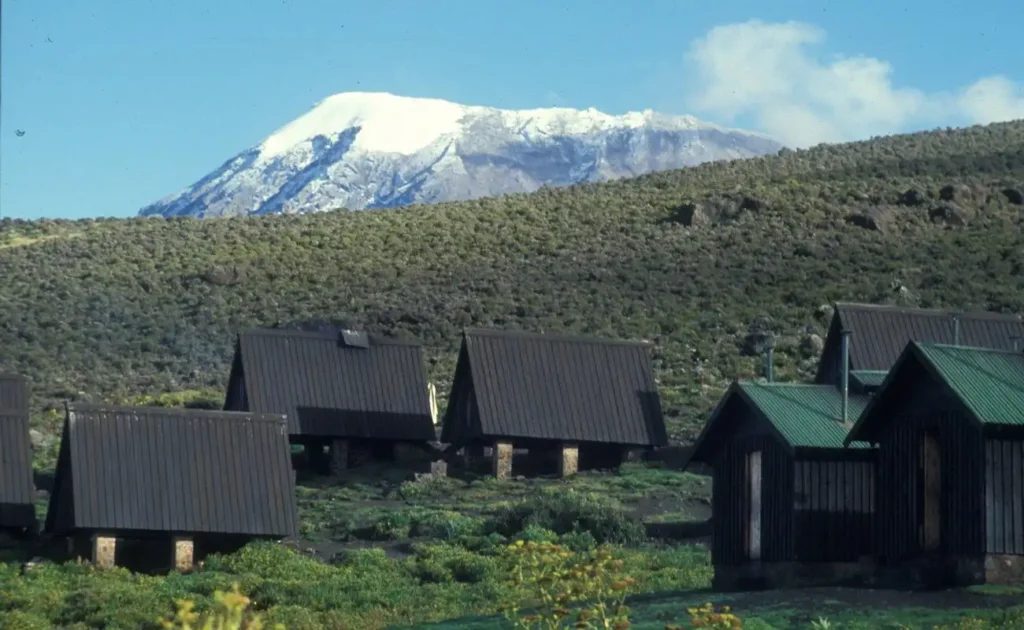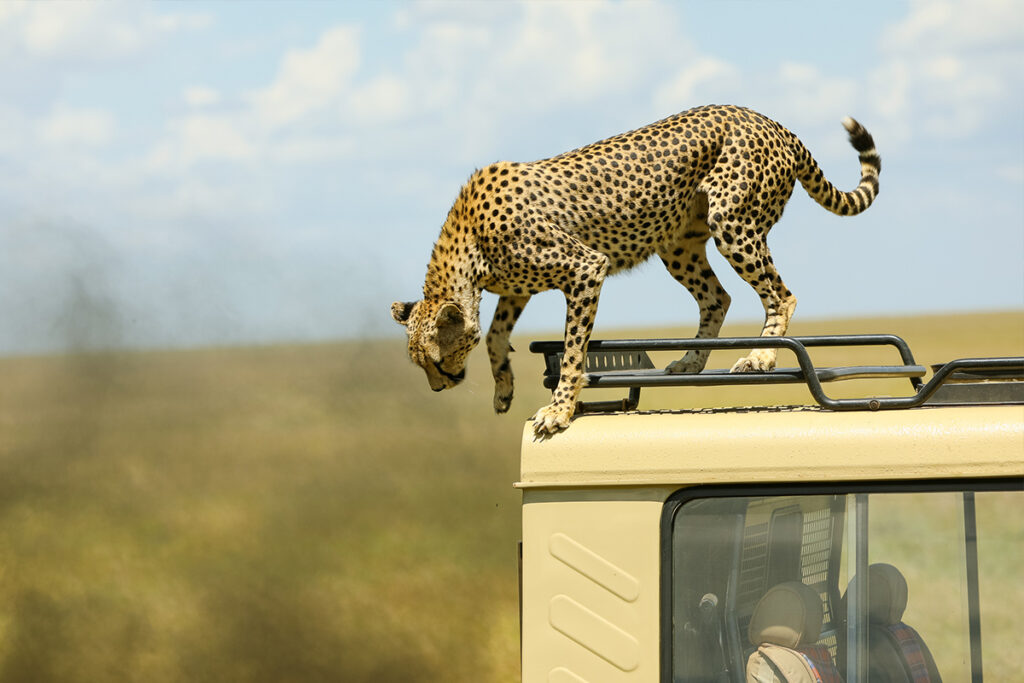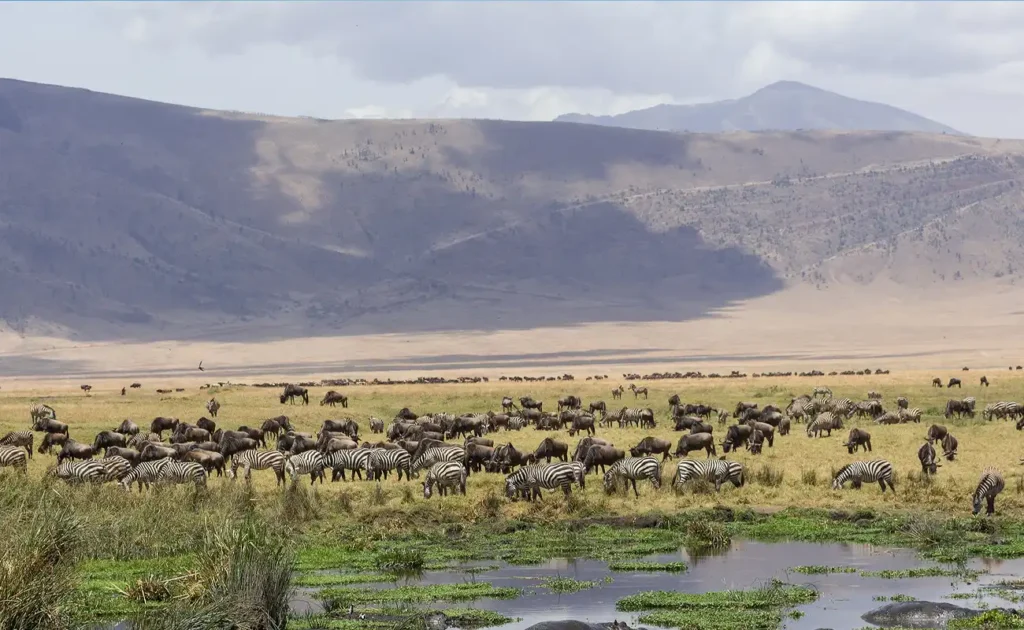Standing at a staggering 5,895 meters, Mount Kilimanjaro is Africa’s tallest peak and the world’s highest free-standing mountain. It’s a challenge that beckons adventurers with promises of breathtaking views and a journey through diverse ecosystems. But how does one prepare for such an endeavor?
Hiking Kilimanjaro involves not just physical endurance but mental resilience as well. With a 50% success rate for those who don’t acclimatize properly, understanding the intricacies of altitude and terrain is crucial. From selecting the appropriate route to mastering acclimatization, this guide lays bare the essentials for a successful climb, informed by both historical insights and modern strategies.
![]()
Hiking Kilimanjaro: A Step-by-Step Guide
Mount Kilimanjaro stands as an enticing challenge for adventurers around the globe. It towers as Africa’s highest peak, promising a remarkable journey. Climbing this mountain requires more than just physical strength; preparation is essential. Understanding weather patterns, acquiring the right permits, and building endurance are vital steps. Getting these pieces right sets the stage for a successful adventure.
Acclimatization is a critical aspect to consider when planning your hike. Many climbers face altitude sickness if they don’t acclimate properly. Ascending slowly and taking rest days can help your body adjust to the elevation. Experienced guides often recommend specific routes that allow ample time for adaptation. This approach greatly increases the odds of reaching the summit safely.
Choosing the right route through Kilimanjaro is like picking a mystery novel with different twists. Each route offers distinct scenery and challenges. Options include the Marangu, Machame, and Lemosho routes, among others. Each path varies in length, difficulty, and required preparation. Exploring your options allows you to select a route that suits your skill and adventure level.
Packing the right gear is crucial for a safe and comfortable climb. Essential items include sturdy hiking boots, warm layers, and a reliable backpack. A comprehensive packing list should also consist of a first aid kit, hydration system, and food supplies. For an easy checklist, consider listing gear like this:
- Hiking Boots
- Warm Clothing Layers
- Backpack
- First Aid Kit
- Hydration System
- Food Supplies
10 Things I Wish I Knew BEFORE Climbing Mt Kilimanjaro! | Follow Alice | 4K
The Preparation of Hiking Kilimanjaro
Preparing to hike Mount Kilimanjaro requires careful planning and attention to detail. Before setting foot on the mountain, it’s important to understand its challenges. Fitness training should be part of your routine, focusing on cardiovascular endurance and strength. Consider running, hiking, or cycling several months in advance. These activities will better prepare your body for the journey ahead.
Researching and selecting the right gear is another essential step in preparation. Think about the varied weather conditions you’ll face throughout the climb. Proper clothing, such as moisture-wicking layers and a warm jacket, is crucial for staying comfortable.
- Moisture-wicking layers
- Warm jacket
- Waterproof shell
Additionally, sturdy boots will protect your feet during those long hikes.
Acquiring the necessary permits and documents is vital before your expedition. Climbers need permits to enter the national park and these can be arranged through a tour operator. Ensure your passport is valid for at least six months past your return date. It’s also wise to check for any visa requirements depending on your nationality. These preparations ensure a smooth entry into Tanzania for your adventure.
Understanding altitude and how your body reacts to it is crucial for climbers. Many experience altitude sickness, which can be dangerous if not managed properly. To mitigate this, climbers should acclimate slowly, taking breaks during ascent. A sample itinerary may look like this:
| Day | Activity |
|---|---|
| 1 | Arrival and rest day |
| 2 | Short hike and acclimatization |
| 3 | Begin ascent |
The Importance of Acclimatization for Kilimanjaro
Acclimatization is a vital process for anyone climbing Mount Kilimanjaro. As you ascend, the air becomes thinner, which can lead to altitude sickness. This condition includes symptoms like headaches, nausea, and fatigue. Gradual acclimatization helps your body adjust to lower oxygen levels, reducing the risk of illness. Embracing a “climb high, sleep low” strategy often proves beneficial.
Understanding how your body reacts to altitude is essential for a safe hike. Key indicators of how well you’re adjusting include your heart rate and sleep quality. Monitoring these can provide early warnings of altitude sickness. To aid climbers, here are some important signs to watch for:
- Increased heart rate
- Difficulty sleeping
- Loss of appetite
Trekking slowly is one of the best methods for proper acclimatization. It might be tempting to rush, but patience is crucial. You can increase your odds of success by choosing longer routes, like the Lemosho or Northern Circuit. These routes allow more time for your body to adapt. Slow, steady progress helps ensure climbers reach the summit safely.
Hydration and nutrition also play significant roles in acclimatization. Drinking plenty of water helps maintain energy levels and combats dehydration caused by high altitudes. A balanced diet, rich in carbohydrates, supports stamina and overall health. Some suggested foods to bring include:
| Food Item | Benefit |
|---|---|
| Oats | High in carbohydrates |
| Dried fruits | Energy boost |
| Nuts | Healthy fats and protein |
Choosing the Right Route for Climbing Kilimanjaro
Choosing the right route for climbing Kilimanjaro is a crucial decision. Each route offers unique scenery, challenges, and experiences. The Marangu route, known as the “Coca-Cola” route, is popular for its comfortable huts and easier path. On the other hand, the Machame route, or “Whiskey” route, offers a more challenging climb with stunning views. Your choice depends on your fitness level and desire for adventure.
Length and difficulty of each route can vary significantly. While the Marangu route takes five to six days, the Northern Circuit extends up to nine days, allowing more time for acclimatization. The Rongai route is less crowded but offers a gentler ascent. Machame, Lemosho, and Shira routes are more strenuous but reward climbers with breathtaking landscapes. Choosing a route that matches your experience level and acclimatization needs is essential.
Certainly, the duration of your trek impacts the acclimatization process. Longer routes like the Northern Circuit enhance your chances of summit success. These routes provide gradual ascent profiles, allowing your body to adapt to the altitude. In contrast, shorter routes pose a higher risk for altitude sickness. Weighing these factors helps in selecting a route that aligns with your acclimatization strategy.
Considering the scenic diversity along each route is another important aspect. The Lemosho and Shira routes traverse the scenic western side of Kilimanjaro, offering varied ecozones. The Machame route, known for its dramatic landscapes, includes rainforest, moorland, and alpine desert. Here are some highlights of a few routes:
| Route | Highlights |
|---|---|
| Marangu | Comfortable huts, easy path |
| Machame | Stunning views, challenging climb |
| Rongai | Less crowded, gentle ascent |
Choosing the best season for your hike is also vital. The dry seasons, from June to October and January to February, offer the best climbing conditions. However, these times are more crowded with climbers. Alternatively, the shoulder months of March, April, and November provide quieter trails but come with more unpredictable weather. Assessing your preference for crowd levels and weather conditions can guide your decision.
The Essential Gear for Hiking Kilimanjaro
Having the right gear is crucial for a successful climb up Mount Kilimanjaro. Start with sturdy hiking boots that have good ankle support. These will protect your feet on the rocky terrain and prevent blisters. A reliable backpack is also essential for carrying your gear. Adjustable straps and good ventilation are features to look for.
Layering your clothing is key to staying comfortable in varying temperatures. Start with a moisture-wicking base layer to keep sweat away from your skin. Add lightweight fleece for warmth and a waterproof shell jacket to shield against wind and rain. A hat and gloves can prevent heat loss, especially at higher altitudes. Always pack extra socks to keep your feet dry.
Protecting yourself from the sun at high altitudes is very important. High UV levels can cause quick sunburns, so bring sunglasses with UV protection and a wide-brimmed hat. Sunscreen with SPF 30 or higher should be applied regularly, even when it’s cloudy. Lip balm with SPF will shield your lips from the wind and sun. These items help keep your skin protected throughout the climb.
Hydration and nutrition must not be overlooked when packing. A hydration system like a water bladder ensures you can drink without stopping. Carry energy bars or trail mix for quick, high-calorie snacks. Many climbers bring a thermos for hot drinks, providing warmth on cold days. Here’s a quick list to help pack your essentials:
- Hydration system
- Energy bars
- Trail mix
- Thermos
Don’t forget a basic first aid kit for emergencies. It should include band-aids, antiseptic wipes, and pain relievers. Blister treatment is particularly important given the long days of hiking. A small pack of tissues and hand sanitizer ensure cleanliness on the trail. With the proper gear, climbers can focus on the adventure and the beauty of Kilimanjaro.
Tips and Strategies for a Successful Kilimanjaro Climb
Pacing yourself is one of the most crucial strategies for climbing Kilimanjaro successfully. It might seem easy at first, but rushing can lead to exhaustion and altitude sickness. Take it slow, letting your body adjust to the altitude changes. Guides often remind climbers to go “pole, pole,” which means “slowly, slowly” in Swahili. This steady pace helps conserve energy and improve acclimatization.
Remaining hydrated can’t be overlooked, even when it’s cold, and you don’t feel thirsty. Proper hydration helps your body cope with altitude and keeps it functioning well. Aim to drink at least three to four liters of water a day. Using a hydration bladder makes it easier to sip regularly without stopping. Always carry water purification tablets, as a backup, to ensure safe drinking water.
Trusting your guide’s expertise is vital for a safe and enjoyable climb. Guides are familiar with the terrain and weather conditions, making them excellent resources for advice. They will set the pace, help with any altitude sickness symptoms, and adjust plans if needed. Listen to their instructions carefully and ask questions if unsure about something. Their experience contributes greatly to the safety and success of your adventure.
Nutrition should also be a top priority on your climb. High-energy foods provide the fuel you need for long days of hiking. Bring a mix of carbohydrates, fats, and proteins to sustain your energy levels. Snacks like nuts, dried fruits, and energy bars can be easily packed. Eating enough each day supports both your physical performance and mental stamina.
Mental preparation is just as important as physical readiness. Kilimanjaro’s challenges extend beyond physical endurance; mental toughness matters too. Positive thinking can keep you motivated on difficult days. Setting small goals, like reaching the next campsite, makes the journey feel more manageable. Remember, each step brings you closer to the summit.
Key Takeaways
- Plan ahead to ensure a successful Kilimanjaro adventure.
- Pace yourself to prevent exhaustion and altitude sickness.
- Stay hydrated for better acclimatization during the climb.
- Select the route that best fits your experience level.
- Trust your guide’s expertise for a safe journey.




